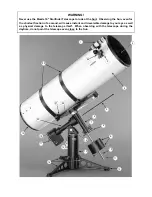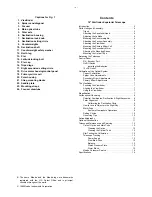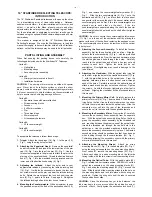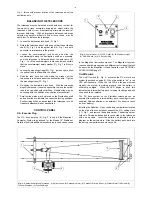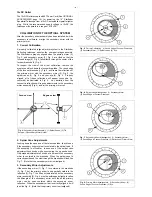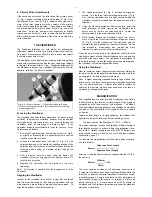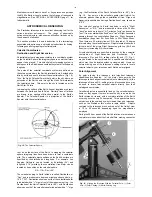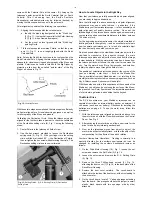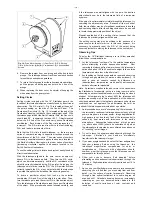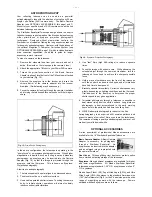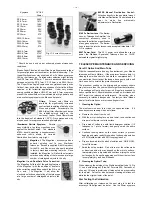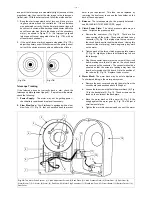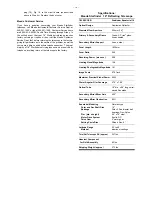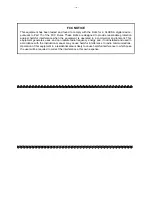
- 13 -
and point the telescope at a moderately bright (second or third
magnitude) star, then center the star image in the telescope’s
field-of-view. With the star centered, follow the method below:
1. Bring the star image slowly out of focus until one or more
rings are visible around the central disc. If the collimation
was performed correctly, the central star disk and rings will
be concentric circles, with a dark spot dead center within the
out-of-focus star disk (this is the shadow of the secondary
mirror), as shown in Figure 17A. (An improperly aligned
telescope will reveal elongated circles (Fig. 17B), with an
off-center dark shadow.)
2. If the out-of-focus star disk appears elongated (Fig. 17B),
adjust the primary mirror tilt hex screws of the primary mirror
cell until the circles are concentric on either side of focus.
Fig. 18: The Motor Drive System. (1) Clutch Adjustment Screws; (2) Back Plate; (3) Clutch Pressure Plate; (4) Worm Gear; (5) Spur Gear; (6)
Worm Block; (7) D.C. Motor; (8) Worm; (9) Red Wire; (10) Motor Plug Connector; (11) Slow-Blow Fuse; (12) Circuit Board; (13) Battery Carrier; (14)
Dust Cover.
Fig. 17A.
Fig. 17B.
harm to your equipment. This fuse can be replaced by
removing the dust cover to expose the fuse holder on the
back of the control panel.
3. Balance: The telescope may not be properly balanced -
see BALANCING THE TELESCOPE, page 5.
4. Clutch Power Plate: The clutch pressure plate may be
loose. To tighten the pressure plate:
a. Remove the dust cover (14), Fig. 18. There are five
wires coming off the motor. These wires all lead to one
connector (10), Fig. 18, that plugs into the top corner of
the circuit board, next to the slow blow fuse. Unplug this
connector (the motor plug) before beginning any work
on the motor.
b. Tighten each of the three clutch pressure plate screws
(1), Fig. 18, slightly until there is sufficient drag to drive
the telescope.
c. Plug the connector back into the top corner of the circuit
board, making sure that all 5 pins on the circuit board
are covered by the connector. The connector should be
oriented so that the wires are leading away from the
board, not crossing over the board. Note the position of
the red wire (9), Fig. 18. Replace the dust cover.
5. Worm Block: The worm block may be out of adjustment.
To eliminate binding in the worm gear system:
a. Remove the dust cover and unplug the motor from the
circuit board (as described above in Step 4a).
b. Loosen the two screws that hold the worm block (6), Fig.
18, to the back plate (2), Fig. 18. These screws can be
found on the outside of the back plate.
c. Move the worm block until the worm (8), Fig. 18, fits
snugly against the worm gear (4), Fig. 18, with just a
small amount of play.
d. Tighten the worm block screws and connect the motor
Telescope Tracking
If the telescope does not correctly track a star, check the
telescope's polar alignment (page 8). If a problem still persists,
check the following:
1. Power Supply: The motor may not be getting power -
check battery condition and replace if necessary.
2. Slow Blow Fuse: Your Starfinder is equipped with a slow-
blow fuse (11), Fig. 18, that will sacrifice itself to prevent
1
2
3
4
5
6
7
8
9
10
11
12
13
14


